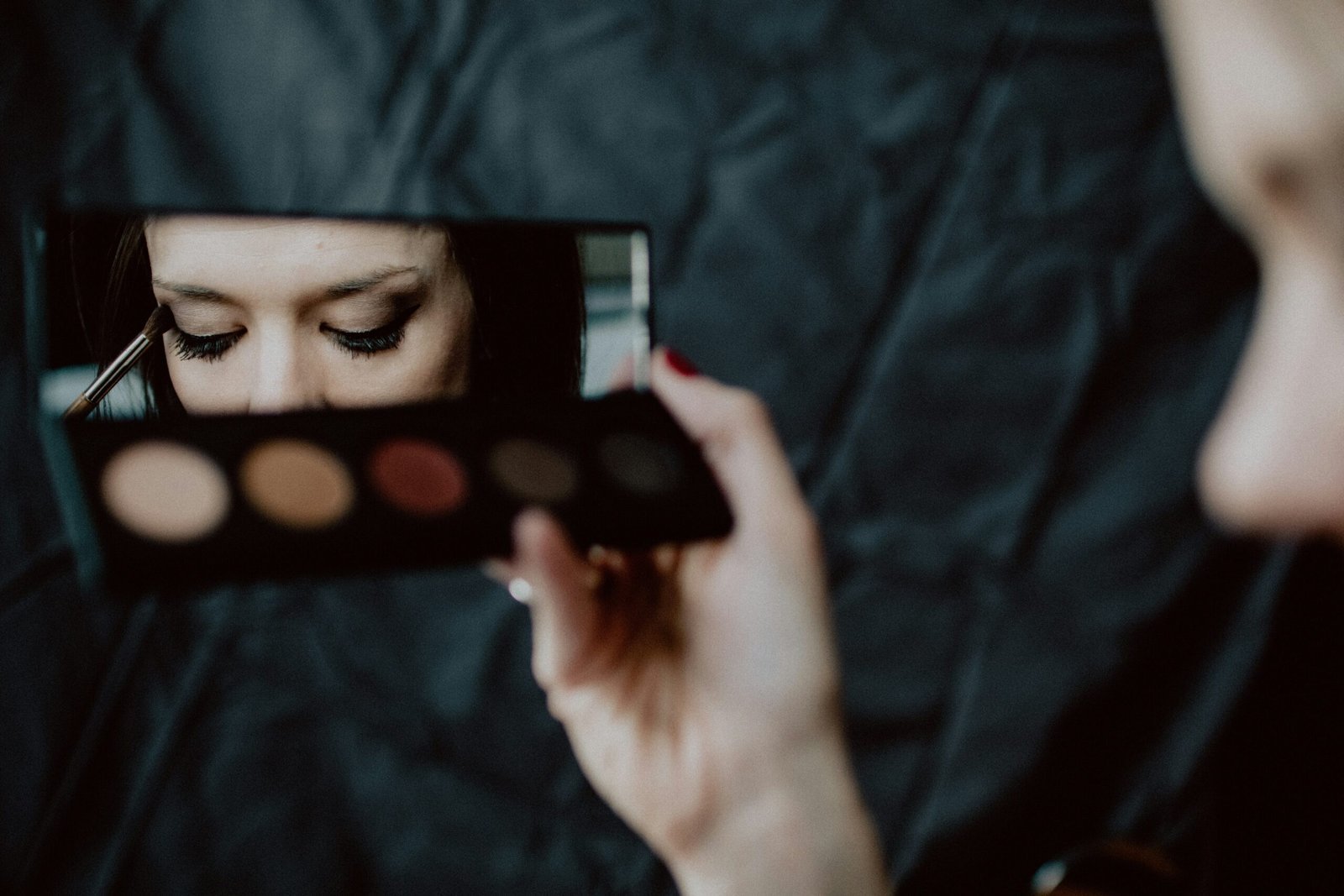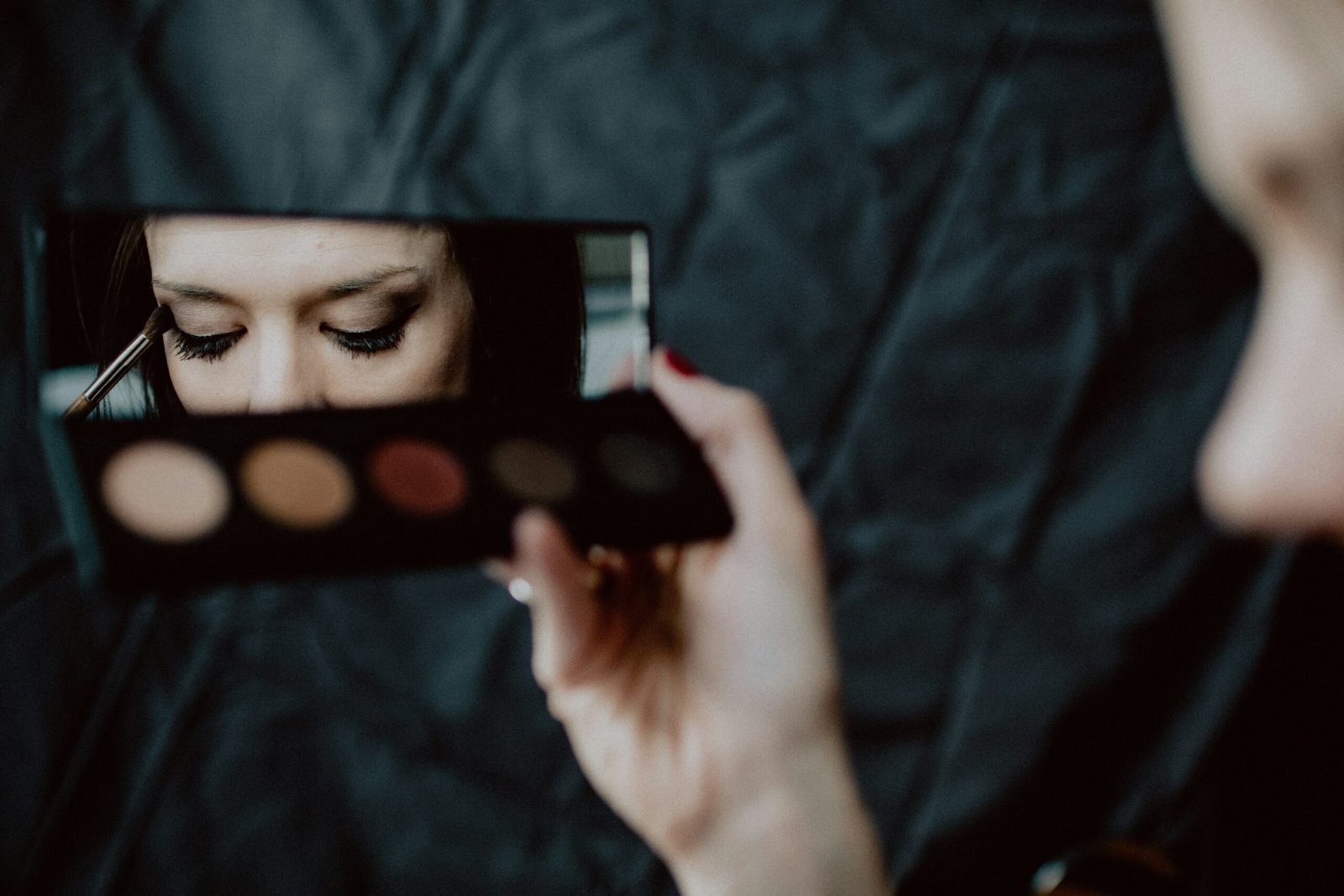
Introduction to Eyeshadow
Eyeshadow is a fundamental component in the realm of makeup artistry, serving as a versatile tool to accentuate and enhance the eyes. Originating from ancient civilizations, eyeshadow has evolved significantly over the centuries. In ancient Egypt, both men and women used kohl to adorn their eyes, a practice believed to ward off evil spirits and protect against the harsh desert climate. Fast forward to modern times, eyeshadow has become an indispensable element in makeup routines, offering a wide array of colors, textures, and finishes to suit every preference and occasion.
The market offers a diverse selection of eyeshadow types, each designed to achieve different effects. Powder eyeshadows are the most common and are available in both pressed and loose forms. These are favored for their blendability and ease of application. Cream eyeshadows, on the other hand, provide a more intense color payoff and are ideal for creating bold, dramatic looks. They can be applied with fingers or brushes and are known for their long-lasting properties. Liquid eyeshadows are gaining popularity for their high pigmentation and unique finishes, ranging from metallic to glitter. These formulas often come with applicators for precise application and can be layered for a more impactful effect.
Eyeshadow plays a crucial role in enhancing the eye shape and color, contributing significantly to the overall makeup look. By strategically applying different shades and textures, one can create depth, dimension, and definition. For instance, using darker shades in the crease can make the eyes appear more defined, while lighter shades on the eyelid can make them pop. Additionally, eyeshadow can complement and contrast with one’s natural eye color, making it stand out more vividly. Whether aiming for a subtle, everyday look or a striking, avant-garde style, eyeshadow offers endless possibilities to express creativity and individuality.
Choosing the Right Eyeshadow for Your Eye Color
Choosing the right eyeshadow for your eye color can significantly enhance your natural beauty and make your eyes stand out. For those with blue eyes, shades of bronze, copper, and warm browns create a striking contrast. These colors make the blue appear more vivid and captivating. Additionally, shades of peach or apricot can add a subtle yet beautiful highlight to blue eyes.
Individuals with green eyes can benefit from using eyeshadow in shades of plum, mauve, and burgundy. These colors enhance the green tones, making the eyes appear more intense and dramatic. Gold and warm taupe shades can also work exceptionally well to create a complementary effect, highlighting the unique hue of green eyes.
For brown eyes, the possibilities are vast. Brown-eyed individuals can experiment with a wide range of colors, including deep blues, purples, and greens. These shades create a stunning contrast and bring out the depth of brown eyes. Additionally, metallic shades like gold and bronze can add a touch of glamour and sophistication, accentuating the warmth of brown eyes.
Hazel eyes possess a unique blend of colors, often featuring flecks of green, brown, and gold. To enhance hazel eyes, consider using shades of green, gold, and bronze. These colors can draw out the different tones within hazel eyes, making them appear more multifaceted. Purple shades, particularly deep plums, can also add a beautiful contrast, highlighting the complexity of hazel eyes.
When selecting eyeshadow, it’s essential to consider how the colors can create contrast and highlight the natural beauty of your eyes. Experimenting with different shades and combinations can help you discover the perfect look that complements your eye color. By understanding which colors enhance your eyes, you can achieve a stunning and personalized makeup look that truly stands out.
Essential Eyeshadow Tools and Brushes
When it comes to mastering the art of eyeshadow application, having the right tools is indispensable. A variety of brushes and tools are designed to achieve specific effects, ensuring that your eyeshadow looks are both precise and professional. Understanding the purpose of different brushes and how to maintain them can significantly enhance your makeup routine.
First and foremost, the blending brush is a must-have for any eyeshadow enthusiast. This fluffy brush is designed to diffuse harsh lines and seamlessly blend colors, creating a smooth transition between shades. It is especially useful for achieving a soft, gradient look on the eyelids. For optimal results, choose a blending brush with soft, synthetic bristles that are gentle on the skin.
The flat shader brush is another essential tool in your eyeshadow arsenal. This brush features densely packed bristles that are perfect for packing on color and providing a more intense pigmentation. It is particularly effective for applying eyeshadow to the entire lid, ensuring an even and vibrant application. When selecting a flat shader brush, look for one with firm bristles that offer precise control.
Next, the angled brush is ideal for creating defined lines and adding detail to your eyeshadow looks. Its angled shape makes it perfect for applying eyeshadow along the lash line or creating a sharp cut crease. An angled brush with thin, stiff bristles will help you achieve the precision needed for these intricate techniques.
In addition to these primary brushes, consider incorporating a pencil brush for smudging and a concealer brush for cleaning up any mistakes. The pencil brush’s small, tapered tip is perfect for smudging eyeshadow along the lower lash line, while the concealer brush can help sharpen edges and correct any errors.
Maintaining your brushes is equally important for ensuring their longevity and performance. Regularly clean your brushes using a gentle brush cleanser or a mixture of mild soap and water. Gently reshape the bristles and allow them to air dry completely before using them again. Proper maintenance not only extends the life of your tools but also ensures a hygienic and flawless application every time.
Investing in high-quality eyeshadow tools and brushes and taking care of them properly can elevate your makeup routine, allowing you to experiment with various techniques and trends to achieve stunning results.
Basic Eyeshadow Techniques for Beginners
Mastering the art of eyeshadow application can seem daunting for beginners, but with a few fundamental techniques, you can create beautiful, polished looks effortlessly. Start by selecting a base shade that complements your skin tone. This shade will serve as the foundation for your eyeshadow look and help other colors blend seamlessly. Using a fluffy brush, apply the base shade across your entire eyelid, up to the brow bone.
Next, to achieve a gradient effect, choose a medium-tone shade. This color should be slightly darker than your base shade. Apply it to the crease of your eyelid using a windshield-wiper motion. This technique helps to create depth and dimension. For a more defined look, you can use a pencil brush to focus the color directly in the crease.
Blending is crucial in eyeshadow application. It ensures that the colors transition smoothly and prevents harsh lines. Using a clean blending brush, gently sweep over the edges where the colors meet. Small, circular motions work best for blending. Remember, the key is to blend until you achieve a seamless gradient.
To add definition, you can use a darker shade on the outer corner of your eyelid. Apply it in a small “V” shape, extending slightly into the crease and along the upper lash line. This technique creates a subtle smoky effect and enhances the overall look. Blend this darker shade into the medium-tone color for a cohesive finish.
For a touch of brightness, apply a light, shimmery shade to the inner corner of your eyelid and just below the brow bone. This highlight can make your eyes appear larger and more awake. Ensure you blend well to avoid any stark contrast with the other shades.
By practicing these basic eyeshadow techniques, beginners can build a strong foundation and gradually experiment with more complex looks. With patience and practice, the process will become second nature, allowing for creativity and expression through makeup.
Advanced Eyeshadow Techniques for Makeup Enthusiasts
For makeup enthusiasts eager to elevate their eyeshadow game, mastering advanced techniques can significantly enhance the overall look. One of the most popular advanced techniques is the cut crease. This technique involves creating a sharp contrast between the eyelid and the crease, making the eyes appear larger and more defined. To achieve a cut crease, start by applying a transition shade to the crease, then use a concealer to carve out a sharp line just above the eyelid. Finish by applying a bold eyeshadow color on the lid, ensuring the line remains distinct and crisp.
Another sophisticated eyeshadow look is the halo eye, which focuses on creating a luminous effect at the center of the eyelid. Begin by applying a darker eyeshadow shade to both the inner and outer corners of the eye, leaving the center of the lid bare. Next, use a lighter, shimmery shade to fill in the center of the lid, blending it seamlessly into the darker shades on either side. This technique draws attention to the eyes, giving them a captivating, multidimensional appearance.
The smokey eye remains a timeless favorite among makeup enthusiasts, renowned for its sultry and dramatic effect. To create a smokey eye, start with a matte base color applied across the entire lid. Gradually build up intensity by blending in a darker shade at the outer corner and along the crease, ensuring smooth transitions between colors. To enhance the smokey effect, use a smudged eyeliner along the upper and lower lash lines, and finish with a generous coat of mascara or false lashes for added drama.
Professional makeup artists often stress the importance of blending to achieve a flawless look. Investing in quality brushes and practicing various blending techniques can make a significant difference in the final result. Additionally, don’t be afraid to experiment with different colors and textures to find what best complements your eyes and personal style. By mastering these advanced eyeshadow techniques, you can create stunning, professional-looking eye makeup that stands out in any setting.
Eyeshadow Trends to Try This Year
In the ever-evolving world of beauty, eyeshadow trends continually shift, introducing fresh and exciting ways to express personal style. This year, several trends have taken the beauty community by storm, each offering unique opportunities to experiment and elevate your makeup game.
Bold colors are making a significant impact, with vibrant hues like electric blues, fiery reds, and vivid purples dominating eyeshadow palettes. These striking shades are perfect for making a statement, whether used across the entire lid or as a pop of color in the inner corners. To incorporate bold colors into your everyday look, consider using a single vibrant shade blended with neutral tones for a balanced yet eye-catching effect.
Glitter and metallic finishes are also trending, adding a touch of glamour and sophistication to any makeup look. These finishes can be versatile, suitable for both subtle daytime shimmer and dramatic evening sparkle. To achieve an everyday glitter look, apply a light wash of shimmer over a neutral base, or for a more intense effect, layer metallic eyeshadows with a wet brush to amplify the shine and create a foiled appearance.
Graphic eyeshadow designs are another trend that has gained popularity, combining creativity with precision. This trend involves using sharp lines and geometric shapes to craft unique and bold eye looks. Techniques such as cut creases, floating eyeliner, and negative space designs are at the forefront of this trend. To incorporate graphic designs into your routine, start with simpler shapes and gradually experiment with more intricate patterns as you gain confidence and skill.
These eyeshadow trends offer a myriad of ways to express your individuality and creativity. By experimenting with bold colors, glitter and metallic finishes, and graphic designs, you can stay on-trend while discovering new facets of your personal style. Whether for everyday wear or special occasions, these trends provide ample inspiration for your next eye-catching look.
Common Eyeshadow Mistakes and How to Avoid Them
Achieving a flawless eyeshadow look requires practice and precision, yet even the most seasoned makeup enthusiasts can fall prey to common application mistakes. Identifying and correcting these errors can drastically enhance the overall appearance of your eye makeup. Here, we delve into some frequent eyeshadow mistakes and provide practical solutions to help you perfect your technique.
One prevalent mistake is uneven blending. Eyeshadow that isn’t blended properly can create harsh lines, making the look appear unrefined. To avoid this, invest in a good quality blending brush and use a light hand. Start with a transition shade that complements your skin tone and apply it to your crease in a windshield wiper motion. This will help in creating a smooth gradient effect. Remember, blending is key to achieving a seamless look.
Another issue is eyeshadow fallout, which can leave unwanted specks of pigment under the eyes and on the cheeks. To mitigate this, tap off the excess product from your brush before application. Additionally, applying a setting powder under your eyes can catch any fallout, which can then be easily swept away. Some makeup artists also recommend doing eye makeup first, then proceeding with the rest of your face to ensure a clean look.
Choosing the wrong shades for your complexion is another common pitfall. Selecting colors that clash with your skin tone can result in an unflattering appearance. For those with fair skin, soft pastels and cool tones work well, while medium skin tones benefit from warm neutrals and earthy shades. Deeper skin tones can pull off vibrant jewel tones and rich, deep colors beautifully. Experimenting with different palettes and seeking professional advice can help you identify the shades that best complement your complexion.
By addressing these common eyeshadow mistakes, you can elevate your makeup routine and achieve a polished, professional look. With the right techniques and tools, flawless eyeshadow application is well within reach.
Caring for Your Eyes and Eyelids
Maintaining the health of your eyes and eyelids is paramount, especially if you frequently wear eyeshadow. Proper care ensures not only the longevity of your makeup looks but also the well-being of such a delicate area. One of the first steps in eye and eyelid care is the proper removal of eyeshadow. Utilizing gentle, eye-safe makeup removers is crucial. Opt for products that are specifically formulated to dissolve makeup without causing irritation. Micellar water and oil-based cleansers are often recommended for their effective yet gentle cleansing properties.
When selecting eyeshadow and other eye makeup products, it is essential to choose those that are labeled as ophthalmologist-tested and hypoallergenic. These products are less likely to cause adverse reactions. Additionally, make a habit of checking the expiration dates on your eye makeup, as using expired products can lead to infections and irritations.
Maintaining healthy eyelids also involves regular hygiene practices. Always wash your hands before applying or removing makeup. This simple step can significantly reduce the risk of transferring bacteria to your eyes. Moreover, avoid sharing your eye makeup with others and clean your makeup brushes regularly to prevent the buildup of bacteria.
For those with sensitive eyes or prone to allergies, the use of hypoallergenic and fragrance-free makeup is advisable. If you experience any redness, swelling, or itching, cease the use of the offending product immediately and consult a healthcare professional if symptoms persist.
Finally, to prevent irritation and infections, pay attention to how you apply and remove your eyeshadow. Be gentle and avoid tugging on the delicate skin around the eyes. Incorporating these practices into your routine will help maintain the health of your eyes and eyelids, ensuring they remain as beautiful as they are healthy.


